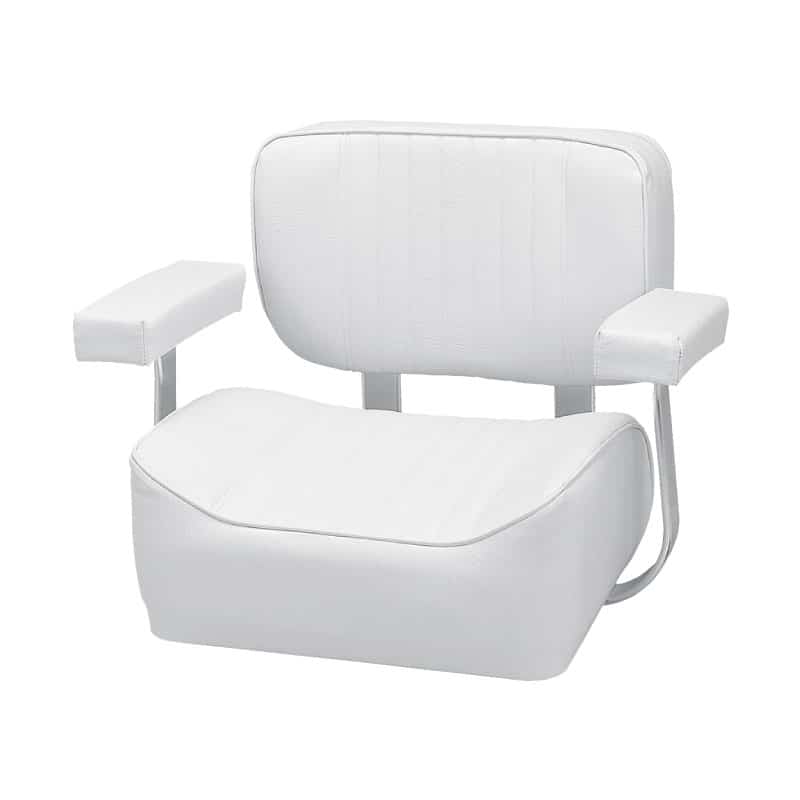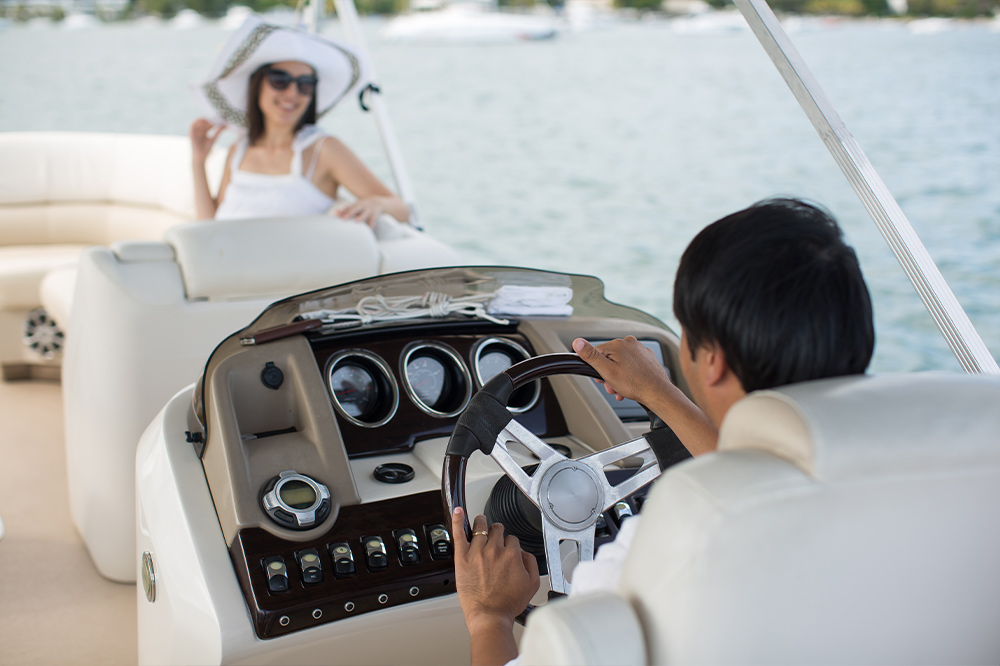As a boat owner, you know how important it is to have quality seating onboard. Whether cruising along the coast or fishing on a serene lake, your boat seats play a vital role in the boating experience. Comfort and durability are two key factors to keep in mind when choosing boat seats. In this ultimate guide, we will explore the evolution of boat seat design, the different types of boat seats available, the importance of material selection, and how to install and maintain your boat seats properly.
Types of Boat Seats: Exploring the Options
The variety of boat seats is extensive, catering to different styles, purposes, and boat types. The most common styles include bench seats, bucket seats, and captain’s chairs.
Tinnie cushions elevate the comfort of bench seats, making them a desirable addition to any boat. Designed to fit snugly on flat surfaces, these cushions provide a plush seating experience, ensuring that passengers can relax during their journey. Their use isn’t limited to just providing comfort, as they also serve to protect the bench seat’s material from wear and tear, thereby extending its lifespan. Check out Tinnie cushions available on Boat Hut for different designs and styles to suit your boat’s needs.
Bucket seats are designed for comfort and often feature a swivel function, making them perfect for fishing boats. The ‘Seat High Back Fold Down 2 Tone Grey‘ is an excellent example of a bucket seat, offering a high back for added support and comfort.
Captain’s chairs are typically more luxurious, aimed primarily at larger boats or yachts. They often come with additional features such as adjustable settings and armrests. The ‘Helm Seat Ocean Shell Only with Bolster Cushion/Upholstery Set For Bay Seat Blue & White‘ and the ‘Helm Chair Deluxe With Arm Rests White‘ are prime examples of advanced captain’s chairs, offering premium comfort and style.

Suggestions On Which Boat Seats To Use On Your Boat
Depending on your boat’s type and size, various seating options can enhance both functionality and comfort. Flip-back chairs are often used on larger crafts, such as center consoles or bigger boat models as they offer both comfortable seating and a stable platform for casting and reeling.
For small fishing boats, fold-down seats are a practical option. They offer solid back support for those long hours on the water and fold down for more accessible storage and more deck space when needed.
Consider investing in leaning posts if you own a day or overnight cabin cruiser. These offer secure standing support when navigating rough waters and double as a comfortable seat when the seas are calm.
As for large luxury boats or sailing vessels, the sky’s the limit. Consider plush, upholstered seating for both indoor and outdoor spaces to provide maximum comfort for you and your guests. Always remember to assess the space available, the purpose of the seat, and the weather’s durability when choosing the correct seating for your boat.
Remember, when considering the seating functionality, looking at the range of operational features is essential. Seats may swivel for easy access and manoeuvrability or remain fixed for stability. Flip seating can save space, while storage seats provide practical utility. The material of the seat has to be durable and comfortable, as it will have to accommodate varying numbers of people.
When assessing what is already installed, it’s equally important to ponder on what can be installed. The boat’s infrastructure might limit the options, but there’s always room for upgrades and enhancements. Access to the floor can influence seating options, mainly if there are recessed sections. Cutting into the floor might be necessary for specific setups, with sufficient space underneath critical for mounting bases.
The seating should ideally be removable to offer flexibility, adapting to shifting requirements of space or function. Moreover, since boats are subjected to various weather conditions, the seats need to be weather-resistant, ensuring longevity and maintaining the aesthetic appeal of your boat
Material Matters: Choosing the Right Fabric and Build
Boat seats can be made from various materials such as vinyl, leather, or polyester. Each material has its own set of advantages and disadvantages, so it is important to choose the right material based on your needs and preferences.
Vinyl is a favourite choice due to its robustness and water resistance. It’s easy to clean and can endure harsh weather conditions, making it ideal for outdoor use. Its resistance to UV rays prevents colour fading, thus retaining the aesthetic appeal of the seats. However, vinyl can absorb much heat and become uncomfortably hot in the sun. It also requires regular maintenance to prevent cracking over time.
Polyester is appreciated for its lightweight and breathability traits. It is quick to dry, resistant to mildew, and offers UV protection. These qualities make polyester a good choice for boat seats, especially in humid climates. Nevertheless, its durability is lower than vinyl’s and may show signs of colour fading over time.
Leather is the most expensive material and also the most luxurious option for boat seats. It offers unmatched comfort and elegance, with a smooth texture that adds a touch of sophistication to any vessel. Leather’s durability is undisputed, as it can withstand extreme weather conditions without showing wear and tear. However, leather requires regular maintenance to keep its shine and softness and is susceptible to cracks and dryness if neglected.
Installation Tips: Setting Up Your Boat Seats
Installing boat seats is a challenge for those new to this process. When installing your boat seats, the connection to the floor is the most crucial aspect. It’s important to note that only some seats can be installed in every boat. Before purchasing your seats, you need to understand what your boat’s floor design can accommodate.
Check the mounting hardware: some seats require a flat surface for installation, while others may need a specific type of mounting system. Take measurements of your boat’s floor space to ensure the seats will fit comfortably without obstructing other functions on the boat.
Safety should be your top priority; ensure the seats are securely installed to avoid accidents while on the water. Following a step-by-step guide will help to ensure the proper installation of your boat seats.
Cleaning and Maintenance: A Guide for Different Types of Boat Seats
Different materials require distinct cleaning methods and products. Here are some guidelines:
- Vinyl Seats: For vinyl seats, use a dedicated vinyl cleaner. These are designed to remove dirt and grime without damaging the vinyl. After cleaning, apply a vinyl protector to shield the seats from UV rays and prevent cracking and fading.
- Leather Seats: Leather seats require more care. Use a cleaner specifically designed for leather seats, followed by a leather conditioner to keep the material supple and prevent cracking. Avoid using harsh chemicals or abrasive tools, which can damage the leather.
- Polyester Seats: Polyester seats can be cleaned using mild soap and warm water. Rinse thoroughly and allow to air dry. Avoid using bleach, as it can fade the colour.
How To Measure For Boat Seats and Choose The Right Size for Your Specific Boat Type
Measuring for boat seats and choosing the right size for your specific boat type involves several key steps. First, start by measuring the space you have available for boat seats. This includes the width, depth, and height of the seating area. Use a tape measure for accuracy, and remember to account for any fixtures or fittings in the space.
Next, consider the type of boat you have and its typical seating configurations. For instance, pontoon boats often have lounge-style seats, while fishing boats may have swivel seats that require more space for rotation. These factors can greatly influence the size and style of seat that will work best for your boat.
When selecting the size of your boat seats, also consider the number of passengers you typically have aboard. Smaller seats may work well if you often boat with a large group, while larger, more comfortable seats may be a better option if you usually have a smaller crew and longer boating excursions.
It’s also crucial to consider the material of the seats. Different materials have different levels of durability and resistance to the elements. Finally, think about the aesthetics. Boat seats come in a variety of colours and styles, so choose an option that complements your boat’s overall aesthetic. Remember, these seats can be a significant investment, so it’s worth taking the time to choose a design you’ll be happy with for years to come.
DIY vs. Professional Installation: What You Need to Know
While you may be tempted to install your boat seats to save money, it is important to remember that professional installation can be a worthwhile investment. Professionals may have access to specialised tools that are required to ensure proper installation and warranty on the work they do. Doing it yourself may save you money in the short term, but it may be more costly in the long run if the installation needs to be done properly.
Troubleshooting Tips For Common Issues Encountered With Boat Seats
Despite their sturdy build, Boat seats are not impervious to damage and wear. Frequent exposure to water, sun, and other harsh elements can lead to common issues such as tears, fading, and mildew. Here are some practical troubleshooting tips to address these issues.
Tears: Tears can occur due to weathering, heavy usage, or accidents. Repairing these tears promptly can prevent them from expanding. A vinyl repair kit can be a swift and cost-effective solution for minor tears. The kit usually includes a filler substance that bonds with the vinyl, with a colour matching the seat. Press the filler into the tear and allow it to cure. For extensive damage, consider hiring a professional or replacing the seat.
Fading: Ultraviolet (UV) rays from the sun can cause boat seats to fade over time. To prevent fading, use a UV-protective spray on your seats. This coating acts as a sunscreen for your boat seats, preserving their vibrant colours. For already faded seats, a vinyl dye can restore their original colour. However, ensure that the seats are cleaned thoroughly before applying the dye.
Mildew: Mildew often forms on boat seats due to damp conditions. Fortunately, a mixture of equal vinegar and water can effectively kill mildew. Spray this solution on affected areas, let it sit for a few minutes, and then scrub away the mildew using a soft brush. Always dry your seats properly after cleaning to prevent mildew development.
Remember, preventive care is the best way to keep your boat seats in optimal condition. Regular cleaning using an appropriate cleaner designed for your type of boat seat material, combined with proper storage techniques, can help prolong the lifespan of your seats and maintain their appearance.
How To Store Boat Seats When Not In Use
Proper maintenance of boat seats is crucial to prolong their lifespan and keep them looking their best. When not in use, specific steps can be taken to ensure the longevity and appearance of these items.
Firstly, it’s crucial to clean the boat seats before storing them. Use a mild soap or a specialised boat seat cleaner to remove any dirt, grime, or salt that may have accumulated. It’s important to avoid harsh chemicals as they can damage the material. After cleaning, dry the seats properly to prevent mildew growth.
Next, consider applying a protective spray. There are products on the market explicitly designed to protect boat seats from UV rays, water, and mildew. This protective layer can go a long way in preserving the original appearance of the seats.
The way you store your boat seats is just as important. They should always be stored in a cool, dry place to prevent damage from the elements. If available, use breathable boat seat covers to protect them further. These covers allow air to circulate, preventing moisture buildup, which can lead to mildew or mould.
For storage purposes, especially for long durations, it may become necessary to thoroughly clean, cover, and potentially remove seats. Removal is only contemplated for extended periods of storage. However, for short-term periods, such as week-to-week storage, it’s advisable to simply clean and possibly cover the seats. This approach ensures the longevity and maintenance of the seats, whether during regular use or storage periods
Finally, if your boat seats have removable cushions, consider taking them off and storing them separately. This reduces the risk of any dampness getting trapped between the cushion and the seat.
Making the Right Choice for Your Boat
Choosing the right boat seat is essential to providing you and your passengers with a comfortable and sustainable boating experience. When investing in a high-quality boat seat, you invest in your well-being, safety, and enjoyment on the water.
By considering the type, comfort, durability, material, installation, and maintenance of the seats, you’ll be on your way to enjoying a smooth and comfortable ride. Remember, it’s not just about aesthetics; it’s also about creating a comfortable and sustainable boating experience.


